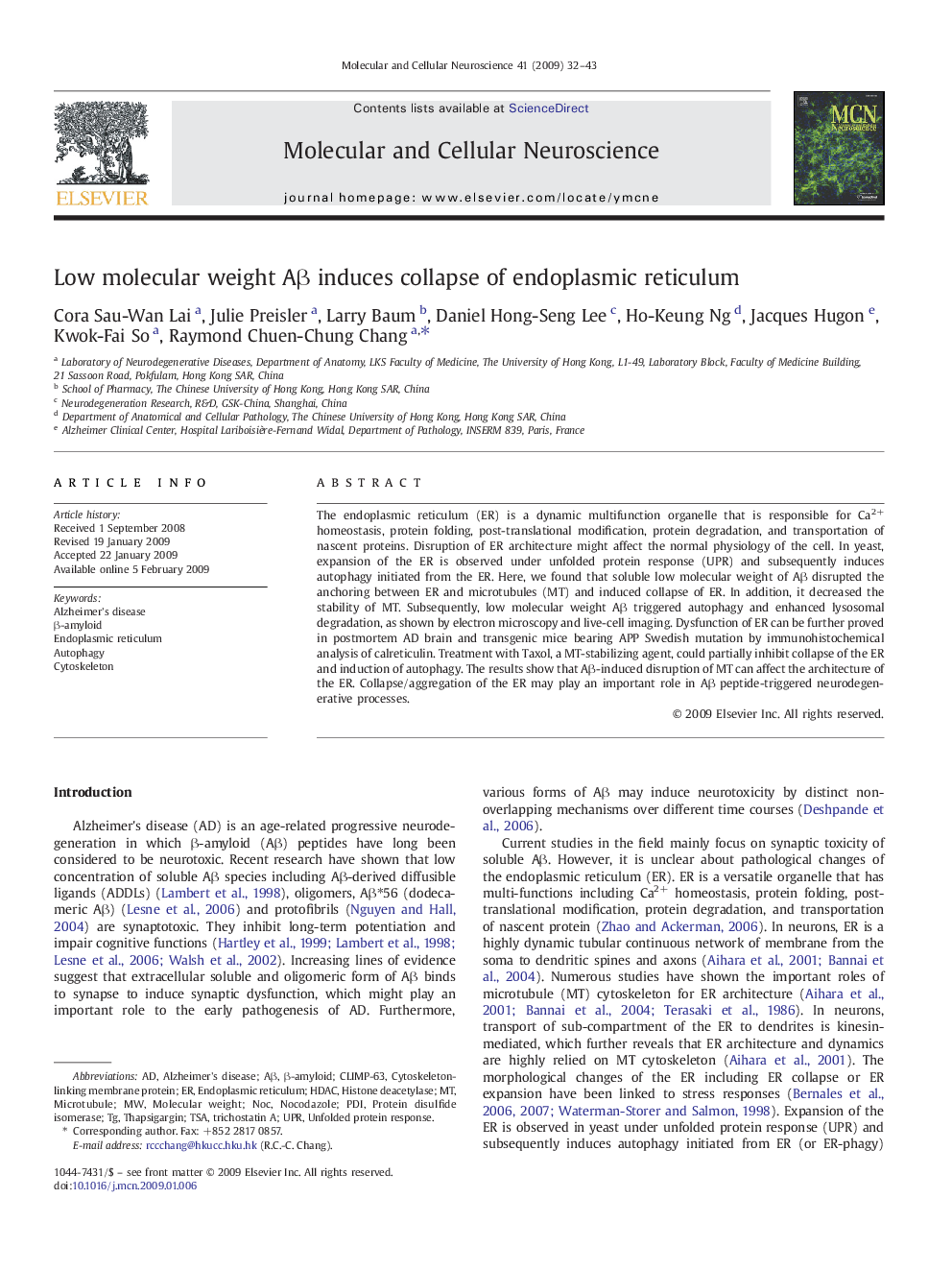| Article ID | Journal | Published Year | Pages | File Type |
|---|---|---|---|---|
| 2198814 | Molecular and Cellular Neuroscience | 2009 | 12 Pages |
The endoplasmic reticulum (ER) is a dynamic multifunction organelle that is responsible for Ca2+ homeostasis, protein folding, post-translational modification, protein degradation, and transportation of nascent proteins. Disruption of ER architecture might affect the normal physiology of the cell. In yeast, expansion of the ER is observed under unfolded protein response (UPR) and subsequently induces autophagy initiated from the ER. Here, we found that soluble low molecular weight of Aβ disrupted the anchoring between ER and microtubules (MT) and induced collapse of ER. In addition, it decreased the stability of MT. Subsequently, low molecular weight Aβ triggered autophagy and enhanced lysosomal degradation, as shown by electron microscopy and live-cell imaging. Dysfunction of ER can be further proved in postmortem AD brain and transgenic mice bearing APP Swedish mutation by immunohistochemical analysis of calreticulin. Treatment with Taxol, a MT-stabilizing agent, could partially inhibit collapse of the ER and induction of autophagy. The results show that Aβ-induced disruption of MT can affect the architecture of the ER. Collapse/aggregation of the ER may play an important role in Aβ peptide-triggered neurodegenerative processes.
